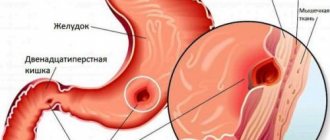What does opportunistic mean?
A pathogen is a microorganism or foreign protein that can cause disease. The phrase “opportunistic” means that this protein can cause disease only under certain conditions:
- the pathogen enters another environment, for example, from the intestines to the vagina
- the acid-base balance of the environment changes, bacteria or fungi begin to multiply rapidly
- the immune system is fighting another disease and cannot contain the growth of opportunistic flora.
All people have opportunistic flora: both healthy and sick. We cannot make sure that only good bacteria live on our skin and mucous membranes: we cannot choose.
Microorganisms inhabit a person from birth: they are transmitted through the birth canal from the mother, after skin-to-skin contact in the first months of life. Conditional pathogens get along well with others and form a unique microbiota - an individual set of bacteria for each person. The state of immunity partly depends on the balance of bacterial species; normally there are more good microorganisms. And opportunistic microorganisms multiply slowly, they do not allow the immune system to relax.
These include: candida fungi, staphylococci, enterobacteria that live in the intestines, for example, fecal enterococcus, demodex skin mite.
“A common example of an opportunistic microorganism is Escherichia coli,” comments Rinaz Kamaletdinov, a urologist at the Semeynaya clinic. - In a healthy person, it is involved in the digestive processes in the intestines. If E. coli gets into the vagina, it will cause inflammation, and if it gets into the urinary tract, it will cause cystitis: inflammation of the bladder. Urethritis and prostatitis in men are most often caused by E. coli, rather than chlamydia and trichomonas."
Stool analysis for dysbacteriosis
| Content: | |
| Standards for stool analysis for dysbiosis | Enterococci |
| Bifidobacteria | Staphylococcus |
| Lactobacilli | Clostridia |
| Escherichia (E.coli typical) | Candida |
| Bacteroides | Stool analysis for pathogenic flora |
| Peptostreptococci | FAQ |
Generalized information on traditional microbiological analysis of stool using a culture-dependent method (bacteria culture) is presented.
Information about new methods for analyzing intestinal microbiota is below.
Stool analysis for dysbacteriosis or
Bacteriological culture ( seeding or bacterial culture ).
Culture is a biological examination of stool that determines the composition and approximate number of microorganisms living in the human intestines. For this purpose, the introduction of feces particles into different nutrient media on which 3 groups of microorganisms grow: normal (necessary for the digestion of food), opportunistic (capable of causing diseases when the natural resistance of the macroorganism is reduced, which are characterized by a lack of nosological specificity) and pathogenic (disease-causing ). This laboratory test is used in medical practice for prophylactic purposes and when an infectious disease of the gastrointestinal tract is suspected. This study allows you to determine the content of bacteria in the large intestine. The human intestine contains a huge number of bacteria that are actively involved in the digestion and absorption of nutrients. A stool test for dysbacteriosis is prescribed mostly for children , in cases where there are the following intestinal dysfunctions: diarrhea, constipation, abdominal pain, flatulence, and also after long-term treatment with antibiotics (antibiotics, in addition to fighting infections, also destroy normal intestinal bacteria). There are three groups of intestinal bacteria - “normal” bacteria (bifidobacteria, lactobacilli and Escherichia) they are actively involved in the work of the intestines, opportunistic bacteria (enterococci, staphylococci, clostridia, candida) under certain circumstances can turn into pathogenic bacteria and cause various diseases, and pathogenic bacteria (Shigella, Salmonella) that, when entering the intestines, cause serious infectious intestinal diseases.
Pathogenic microorganisms and their main characteristics
Date: 11/21/2019
Infection is a complex biological process that occurs as a result of the penetration of pathogenic microbes into the body and disruption of the constancy of its internal environment. The occurrence of infection depends on several factors: the degree of pathogenicity (virulence) of the microbe, the state of the macroorganism and environmental conditions.
Pathogenicity is the ability of a microbe of a certain type, under appropriate conditions, to cause a characteristic infectious disease. Therefore, pathogenicity is a species characteristic.
Virulence is the degree of pathogenicity of a certain strain of a microbe, i.e. an individual trait. For example, the anthrax bacillus is pathogenic because it has the property of causing anthrax disease. But a strain of one culture causes illness and death after 96 hours, and another - after 6-7 days. Consequently, the virulence of the first strain is higher than that of the second.
The virulence of a microbe can be increased by its passage through the sensitive organism of laboratory animals, i.e. sequential infection of a number of animals (after the death of the first infected animal, the microbes isolated from it infect the next animal, etc.). Under natural conditions, the virulence of bacteria increases through passage through a susceptible organism, so patients with a contagious disease must be immediately isolated from healthy people. The virulence of the microbe can be reduced in laboratory conditions by reseeding and growing on nutrient media at elevated temperatures or by adding certain chemicals to the medium (ox bile, a weak solution of carbolic acid, etc.). Based on this principle, attenuated live vaccines are prepared, which are then used against infectious diseases. The virulence of a microbe can also decrease under natural conditions under the influence of sunlight, drying, etc. Thus, virulence as a measure of pathogenicity is a variable value. It can be increased, decreased and even lost. Pathogenicity as a special quality of a pathogenic microbe is manifested in its aggressive properties and toxic effect on the body. Aggressiveness is the ability of a pathogenic microbe to live, multiply and spread in the body, and resist the adverse effects exerted by the body. Some pathogenic microbes, multiplying in the body or on a nutrient medium in a test tube, produce soluble products called aggressins. The purpose of aggressins is to suppress the action of phagocytes. The aggressors themselves are harmless to the body, but if they are added to a non-lethal dose of the culture of the corresponding microbe, they cause a fatal infection.
Toxicity is the ability of a pathogenic microbe to produce and secrete toxic substances that have a harmful effect on the body. There are two types of toxins – exotoxins and endotoxins.
Exotoxins are released into the environment during the life of microbes in the body or on artificial nutrient media, as well as in food products. They are very poisonous. For example, 0.005 ml of liquid tetanus toxin or 0.0000001 ml of botulinum toxin will kill a guinea pig. Microbes capable of producing toxins are called toxigenic. Under the influence of heat and light, exotoxins are easily destroyed, and under the influence of certain chemicals they lose their toxicity. Endotoxins are firmly bound to the body of the microbial cell and are released only after its death and destruction. They are very stable at high temperatures and do not collapse even after several hours of boiling. The toxic effect of many bacterial exotoxins is associated with enzymes - lecithinase (destroys red blood cells), collagenase, hyaluronidase (breaks down hyaluronic acid) and a number of other enzymes that destroy vital compounds in the body. It is also agreed that some pathogenic bacteria (diphtheria staphylococci and streptococci) produce the enzyme deoxyribonuclease. During their life activity, pathogenic microbes also secrete other substances that determine their virulence.
Ways of introduction of pathogenic microbes into the body
The place where pathogenic microbes enter the body is called the entry gate of infection. Under natural conditions, infection occurs through the digestive tract (alimentary route), when pathogenic microorganisms enter food or water. The pathogen can penetrate through damaged, and in some infectious diseases (brucellosis) also intact mucous membranes of the mouth, nose, eyes, genitourinary tract and skin. The fate of pathogenic microbes that enter the body can be different, depending on the state of the body and the virulence of the pathogen. Some microbes, having entered certain organs through the bloodstream, settle (retain) in their tissues, multiply in them, release toxins and cause disease. For example, the causative agent of tuberculosis in lung tissue. Any infectious disease, regardless of clinical signs and localization of the microbe in the body, is a disease of the whole organism. If pathogenic microbes have penetrated the blood vessels and begin to multiply in the blood, they very quickly penetrate all internal organs and tissues. This form of infection is called septicemia. It is characterized by a rapid and malignant course and often ends in death. When microbes are in the blood temporarily and do not multiply in it, but through it are only transferred to other sensitive tissues and organs, where they then multiply, the infection is usually called bacteremia. Sometimes microbes, having penetrated the body, remain only in the damaged tissue and, as they multiply, release toxins. The latter, penetrating into the blood, cause general severe poisoning (tetanus, malignant edema). This process is called toxemia. The ways in which pathogenic microbes are excreted from the body are also different: with saliva, sputum, urine, feces, milk, and secretions from the birth canal.
Conditions for the occurrence of infections and the importance of the body’s condition in this process
For an infectious process to occur, a minimum infectious dose of the microbe is required; however, the more microbes that have entered the body, the sooner the disease develops. The more virulent the microbe, the faster all clinical signs of the disease occur. The gates of infection also matter. For example, after introducing 1 - 2 tuberculosis microbes into the lungs of a guinea pig, a disease may occur, and to cause a disease by subcutaneous injection of microbes, at least 800 live tuberculosis bacilli must be injected.
One of the necessary conditions for the occurrence of the disease is that the body is very susceptible to this injection, but resistant to others. For example, cattle are not infected with horse glanders, and swine fever is completely harmless in terms of infection for humans. The condition of the body is extremely important for the occurrence of an infectious process. I.I. Mechnikov wrote: “The disease, in addition to external causes - microbes, also owes its origin to the internal conditions of the body itself. The disease occurs when these internal causes are powerless to prevent the development of pathogenic microbes; when, on the contrary, they successfully fight microbes, the body turns out to be immune. The penetration of a pathogenic microbe into a sensitive organism does not necessarily cause the corresponding disease.” The body's resistance to infection decreases with poor nutrition. The cold factor, overheating, radiation, alcohol poisoning, etc. also influence. The course of an infectious disease The infectious process does not appear immediately after the introduction of a pathogenic microbe into the body, but after some time. The time from the introduction of microbes into the body until the appearance of the first clinical signs of the disease is called the latent, or incubation, period. Its duration is determined by the virulence and number of invading microbes, the gates of infection, the state of the body and environmental conditions. During the incubation period, the invading microbes multiply, produce qualitative biological changes in the body, as a result of which clinical signs appear. Depending on the duration of the infection, there are acute and short-term infections (foot-and-mouth disease, cholera, anthrax, and many others). Most infections are acute. Infectious diseases of humans and animals can be observed in the form of isolated cases, called sporadic. When an infection quickly spreads among people and covers populated areas of a large territory, such a spread of infection is usually called an epidemic; accordingly, an infection among animals is an epizootic. Infectious diseases by nature differ from other diseases in the following properties: the presence of a living pathogen, contagiousness (transmitted from sick to healthy), incubation period, immunity (immunity) of those who have recovered from the disease. The latter does not always occur. Sources and ways of spreading infection The main source and carrier of the infectious principle is a sick organism. People and animals can become infected from a sick person. Contaminated soil can be a source of infection. Diseases in which infection occurs as a result of the entry of pathogenic microbes from the soil are called soil infections (anthrax, gas gangrene, etc.)
Author: Taisha Asem Sharafikyzy
GP on RVC Regional Infectious Diseases Hospital
bacteriological laboratory - tank laboratory assistant
November 20, 2019











